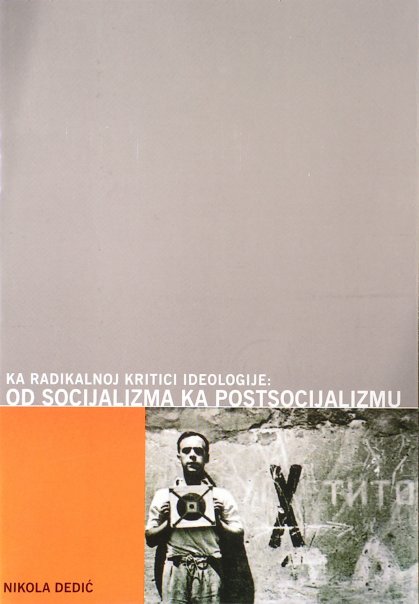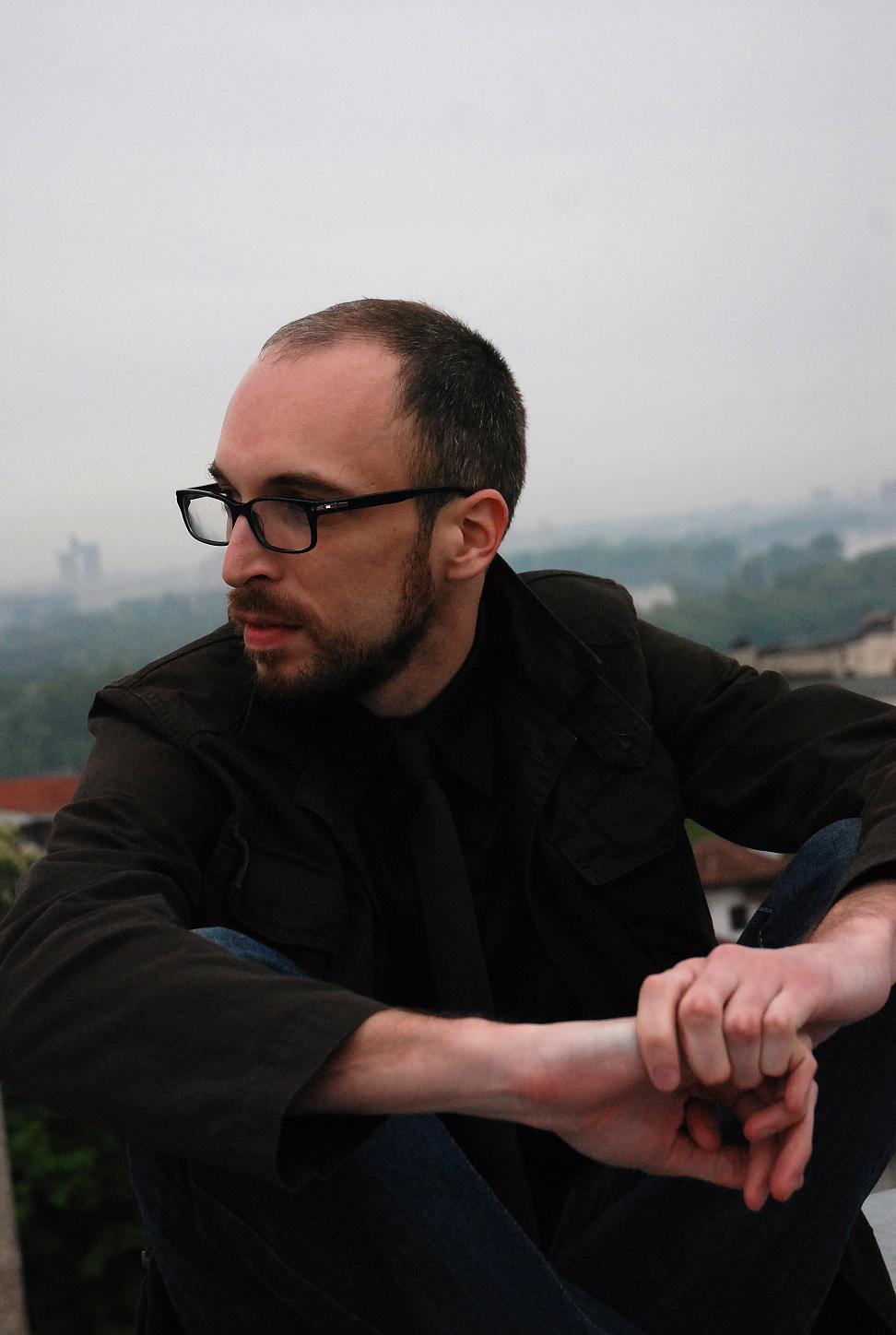Interview with Nikola Dedić

Aneta Stojni?/ARTMargins Online: Is it possible to talk about a “collectors’ scene” in Serbia today?
Nikola Dedić: I wouldn’t say that the word ‘scene’ is completely adequate, but I would definitely say that private collections are new phenomena within local art markets that have emerged over last decade. With this phenomenon, certain institutional changes regarding the production and presentation of contemporary art have also emerged: in the period of the socialist state, for example, centralized cultural institutions dominated in Serbia, with the Museum of Contemporary Art being a main institutional determinant. The Museum, at that time, reflected the orientation of the socialist system toward some kind of social modernization and the connections between local culture and art and the international language of modernism. On the other hand, during the disintegration of Yugoslavia in the 90s, those institutions, including Museum became, I’m gonna use Althusser’s term, national state ideological apparatus-the idea of contemporarity, at least considering art, has been thought at some other place, within unofficial, alternative spaces which mostly functioned by NGO model. Within 2000’s fragments of both models are still active, but now we could also recognize the phenomenon of private collections.. This phenomenon could be recognized as a combination of individual initiatives within art trade and art collecting, but also within the domain of corporate art collecting. Considering this, now we can talk about two private museums in Serbia-the Macura Museum and the Zepter Museum-,large corporate collection-the Telenor collection-, and numerous private collections.
AS/AMO: How do you see the role of collectors in regard to the visual art scene in Serbia? How could their role develop in the future?
 ND: I must admit that I am not very optimistic when it comes to private collections. The main problem with most private collections in Serbia is that they do not function as a public space; exactly the opposite in fact: private collecting is mostly limited to the art trade, i.e. to the reproduction and turnover of private capital. In these cases, when private collections become publicly visible, it usually becomes obvious that they do not offer public spaces that are different from those offered by formal, official institutions which function, as I already said, as a kind of “ideological apparatus of a national state” (Althusser’s term). The central place within these collections is taken by canons of nationally oriented art history which are claustrophobically closed within the conventions of so-called sober modernism; however, some exceptions are the Telenor collection in Belgrade, which is oriented toward actual, contemporary art practices; and the MacuraMuseum near Belgrade which is oriented toward the historical avant-gardes and neo-avant-gardes. The reason for this could possibly be found in the very nature of the capitalist transition in Serbia, and even, I believe, in the rest of South-Eastern Europe. In these countries, the transition functions as the permanent reproduction of nationalistic ideology which is now only supplemented by uncontrolled developing capitalism that uses the lack of and underdevelopment of stable democratic institutions as a suitable framework for this kind of self-reproduction. In a country where the questions of art trade, art collecting, and even stable cultural politics are still unsolved or where they are regulated by law, art collecting becomes simply the acquisition of “patrician” status. In this way, private collections further cement dominant national canons which in this way become part of mainstream national values.
ND: I must admit that I am not very optimistic when it comes to private collections. The main problem with most private collections in Serbia is that they do not function as a public space; exactly the opposite in fact: private collecting is mostly limited to the art trade, i.e. to the reproduction and turnover of private capital. In these cases, when private collections become publicly visible, it usually becomes obvious that they do not offer public spaces that are different from those offered by formal, official institutions which function, as I already said, as a kind of “ideological apparatus of a national state” (Althusser’s term). The central place within these collections is taken by canons of nationally oriented art history which are claustrophobically closed within the conventions of so-called sober modernism; however, some exceptions are the Telenor collection in Belgrade, which is oriented toward actual, contemporary art practices; and the MacuraMuseum near Belgrade which is oriented toward the historical avant-gardes and neo-avant-gardes. The reason for this could possibly be found in the very nature of the capitalist transition in Serbia, and even, I believe, in the rest of South-Eastern Europe. In these countries, the transition functions as the permanent reproduction of nationalistic ideology which is now only supplemented by uncontrolled developing capitalism that uses the lack of and underdevelopment of stable democratic institutions as a suitable framework for this kind of self-reproduction. In a country where the questions of art trade, art collecting, and even stable cultural politics are still unsolved or where they are regulated by law, art collecting becomes simply the acquisition of “patrician” status. In this way, private collections further cement dominant national canons which in this way become part of mainstream national values.
AS/AMO: Do you think that private initiatives could take over the function of often dysfunctional state institutions?
 ND: It depends on what you mean by the phrase “function of state institutions”; if you are thinking of the further perpetuation of the ruling ideology, then private collectionscan complete at least part of their function. I use the notion of ruling ideology in the way that Slovenian theorist Rastko Mo?nik does: he notes a difference between a ruling ideology(i.e. an ideology in Althusser’s sense, as a set of representations, myths, and beliefs within a certain society) and the ideology of those who rule (i.e. the ideology of actual political elite). In this sense, we can conclude that, within transitional societies such as Serbia, the ruling ideology is still nationalism, but that the ideology of those who rule is basically unprincipled -their main principle is realpolitik and political pragmatism within the conditions of a capitalist mode of production. This is an ideal model that can explain the functioning and place of mainstream culture and art within transitional societies: art can be completely “neutral,” i.e., produced within the idea of autonomy, universal aesthetical values, beauty, etc. However, at the same time, it can be a part of the reproduction of the ruling national ideology, or it can be even “at the service” of the most pragmatic goals of capitalistic value reproduction.
ND: It depends on what you mean by the phrase “function of state institutions”; if you are thinking of the further perpetuation of the ruling ideology, then private collectionscan complete at least part of their function. I use the notion of ruling ideology in the way that Slovenian theorist Rastko Mo?nik does: he notes a difference between a ruling ideology(i.e. an ideology in Althusser’s sense, as a set of representations, myths, and beliefs within a certain society) and the ideology of those who rule (i.e. the ideology of actual political elite). In this sense, we can conclude that, within transitional societies such as Serbia, the ruling ideology is still nationalism, but that the ideology of those who rule is basically unprincipled -their main principle is realpolitik and political pragmatism within the conditions of a capitalist mode of production. This is an ideal model that can explain the functioning and place of mainstream culture and art within transitional societies: art can be completely “neutral,” i.e., produced within the idea of autonomy, universal aesthetical values, beauty, etc. However, at the same time, it can be a part of the reproduction of the ruling national ideology, or it can be even “at the service” of the most pragmatic goals of capitalistic value reproduction.
I’ll make a small digression: during a private conversation I was involved in a few days ago, Salvador Dali was mentioned. In the latter years of his life, Dali was not only a sympathizer but also a passionate supporter of Franco’s fascist regime, including political persecutions and murders. Despite this, when Dali is mentioned today, his fascist sympathies are mostly forgotten; you can even hear the argument that if Picasso-“who was a Stalinist”-can receive international acclaim, then we can simply forget Dali’s fascism. It is fascinating how the construct of art “autonomy” and artistic “genius” is used for de-ideologizing and de-politicizing a political figure in the worst sense of the word; furthermore, this concept of artistic “genius” even became a part of capitalist reproductions-Dali’s influence on the American fashion industry is well known.
I would say that this ideological model is also characteristic of mainstream culture and art in transitional societies. It is not surprising that the surrealist paintings of the Mediala group were the favorites of both national ideologists during the 1990s and private collectors during the 2000s.
So, to come back to your question -if you mean to say that the function of cultural institutions is to act as spaces for the production of critical thought and culture that actively rethink contemporarity, then I must say that I’m skeptical concerning local private collections in Serbia.
[su_menu name=”Serbia Focus”]

 Nikola Dedić was born in 1980. He is assistant professor at the Faculty of Philosophy, Niš, where he teaches Theory of Media and Aesthetics. He is also a lecturer at University of Arts, Belgrade where he teaches Art and Post-Socialism Studies. He is the author of the following books: Toward the Radical Critique of Ideology: From Socialism to Postsocialism (Belgrade, 2009); Utopian Spaces of Art and Theory After 1960 (Belgrade, 2009); Triumph of Contemporary Art (co-author with Miško Šuvakovi? and Ješa Denegri, Belgrade, 2010); Less Than Human: Sr?an ?ile Markovi? and Underground Figuration (Belgrade, 2011), and A Painting in the Age of Media (Belgrade, 2011). He is alsothe co-editor of the book Radical Abstraction: Abstract Painting and the Borderlines of Representation (co-editor with Ješa Denegri and Miško Šuvakovi?, forthcoming). The following conversation concerns private art collections within the local art scene in Serbia duringthe 2000s.
Nikola Dedić was born in 1980. He is assistant professor at the Faculty of Philosophy, Niš, where he teaches Theory of Media and Aesthetics. He is also a lecturer at University of Arts, Belgrade where he teaches Art and Post-Socialism Studies. He is the author of the following books: Toward the Radical Critique of Ideology: From Socialism to Postsocialism (Belgrade, 2009); Utopian Spaces of Art and Theory After 1960 (Belgrade, 2009); Triumph of Contemporary Art (co-author with Miško Šuvakovi? and Ješa Denegri, Belgrade, 2010); Less Than Human: Sr?an ?ile Markovi? and Underground Figuration (Belgrade, 2011), and A Painting in the Age of Media (Belgrade, 2011). He is alsothe co-editor of the book Radical Abstraction: Abstract Painting and the Borderlines of Representation (co-editor with Ješa Denegri and Miško Šuvakovi?, forthcoming). The following conversation concerns private art collections within the local art scene in Serbia duringthe 2000s.

